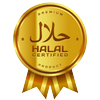The moment you sit down at a Turkish table, the first thing placed before you is always bread. It arrives warm, often still puffed from the oven, its aroma a simple, yet profound promise of the feast to come. Unlike the standardized, pre-sliced loaves found in many Western kitchens, turkish bread is alive. It’s an integral part of the meal, not just a side dish. But have you ever noticed how the experience of Turkish bread changes drastically depending on what you’re eating?
In Turkey, bread is a reflection of the meal, the season, and the specific region it comes from. It transforms itself—from a soft, absorbent dip companion to a crispy, savory meal in its own right. At Mama Fatma, we understand that the quality of our bread is non-negotiable. It is the soul of our table, and we take pride in bringing this authentic tradition to Mississauga, serving our community throughout Toronto, Ontario, and Canada. Let’s delve into why Turkish bread is a culinary chameleon that enhances every bite.
Blog Contents
ToggleFresh Baking Techniques Matter
The profound difference in turkish bread starts long before the dough hits the counter—it begins with the baking technique. When people search for a turkish bread recipe or a recipe for turkish pide bread, they often miss the most crucial ingredient: the heat and the skill of the baker.
Traditional Turkish bread, especially the iconic Pide, is cooked in intense heat, often in a stone oven. This high temperature is the secret weapon. It instantly creates a thin, slightly charred crust while rapidly expanding the gases inside the dough, resulting in a soft, airy, and chewy interior. This contrasts sharply with baking in a standard home oven, where the heat is lower and results in a denser, more uniform texture.
Consider the contrast between two types of bread that look similar but serve totally different purposes:
Pide: Often baked just before the holy month of Ramadan, this bread is thicker, rounder, and exceptionally soft. Its deep dimples and egg-washed, sesame-dusted exterior make it a true feast bread, meant to be torn apart and savored.
Lavaş (The Thin Balloon): This bread is thrown into a blazing oven and puffs up like a balloon, cooking in seconds. It is much thinner, almost hollow, and is designed to wrap kebabs or be used as a vehicle for thick dips.
This dedication to tailored baking techniques is why Turkish bread tastes different every time—it’s engineered for the moment. Trying to recreate the authentic turkish pide bread recipe at home is a rewarding challenge, but nothing beats the taste of a professional stone oven.
Don’t search endlessly for the perfect turkish bread recipe—experience it fresh from our professional oven! We ensure every loaf is baked to perfection.
How Bread Serves As A Meal’s First Companion
In Turkish culture, the presence of fresh bread, or ekmek, on the table is a symbol of respect, abundance, and hospitality. It is the meal’s most faithful companion, arriving first and staying until the very end. The quality of the bread immediately sets the tone for the entire meal.
For instance, at a traditional Turkish Breakfast, the bread is served not just as a side, but as the essential tool for building every bite. Imagine a generous platter of fresh tomatoes, cucumbers, feta cheese, olives, and rich honey with clotted cream. The bread—often a mix of simple sliced turkish bread, rustic whole wheat, and maybe some flaky rolls—is the unifying element. You tear off a piece, spread a bit of kaymak and honey, and pair it with a slice of salty cheese and a fresh olive. The bread’s mild flavor supports and elevates every other taste on the platter.
Furthermore, bread is central to everyday life. The iconic turkish simit bread, a crunchy, molasses-glazed, sesame-crusted ring, serves as a quick breakfast or afternoon snack. It’s portable, cheap, and utterly satisfying. The Simit is not meant to be soft; its charm is its outer crunch and dense, slightly chewy interior. This contrast demonstrates how the type of turkish bread is carefully chosen to fit the speed and nature of the meal. A simple, fresh loaf is the silent partner to a luxurious sit-down meal, while the Simit is the reliable friend on the go.
Start your meal the traditional way with a warm, freshly baked loaf! It’s the perfect first companion for an authentic Turkish dining experience.
Bread Varieties At Mama Fatma’s Table
At Mama Fatma, we celebrate the diversity of turkish bread recipes and techniques, ensuring that the bread we serve is perfectly matched to the main dishes. We offer more than just one kind of bread; we offer a selection designed to enhance specific flavors.
Our most popular varieties include:
Pide (The Feast Loaf): Our classic Pide is soft, fluffy, and slightly chewy. It’s perfect for scooping up thick dips or for being torn apart and eaten with slow-cooked stews. Its dimpled surface holds melted butter beautifully, making it essential for richer meals.
Lavaş (The Wrapper): This thin, elastic flatbread is indispensable for our kebabs and wraps. Its pliable structure allows you to roll up generous portions of marinated meat and fresh vegetables without tearing. It is meant to be eaten quickly and acts more like an edible utensil.
Simit: While primarily a street food, we feature the classic turkish simit bread to show the breadth of our baking expertise. Its crunchy, sesame-crusted surface makes it distinct from our soft pide.
Bazlama (The Pan-Fried): A thicker, chewier flatbread cooked on a griddle or sac. This bread is rustic and stands up well to heavy sauces, making it a wonderful base for rustic lentil dishes or a great accompaniment to a full meze spread.
By offering this variety, we ensure that every customer receives the exact type of bread that will maximize the flavor of their chosen Turkish food. This attention to detail is what makes a meal at Mama Fatma a truly authentic experience.
Don’t settle for one-size-fits-all bread! Explore the authentic variety of our freshly baked Pide, Lavaş, and turkish simit bread options on your next visit.
How Bread Helps Scoop Up Flavorful Sauces
In Turkish dining, bread replaces the fork and spoon more often than not. The bread is not just a carrier for butter; it’s an interactive utensil designed to capture and soak up the rich, complex sauces and oils left behind by the mezes and main dishes. This is perhaps the most satisfying part of eating turkish food.
Consider the following examples where the absorbency of turkish bread is crucial:
Meze Dips: The soft, pillowy interior of the Pide is ideal for plunging into a bowl of creamy Hummus or cool, garlic-infused Haydari . The fluffy texture traps the dip, ensuring you get a perfect balance of flavor with every scoop.
Ezme and Salsas: For thinner, oil-based dips like Ezme, the crust of the bread is used. The sturdy edge acts like a mini-shovel to gather the diced tomatoes, onions, and herbs, along with the rich olive oil and pomegranate molasses dressing.
Stews and Casseroles: After finishing a rich, slow-cooked lamb stew (Guvec), the remaining sauce at the bottom of the bowl is too precious to waste. This is when the soft, doughy bread is used to “wipe” the plate clean, soaking up every last drop of the rich, savory liquid. This is known as suyu banmak—dipping the juice—and it’s a high compliment to the cook.
This interactive element of using the bread to “scoop up” flavor ensures no delicious drop is wasted, connecting the diner intimately with the food.
Ready to dive into our delicious mezes? Our fresh turkish bread is the perfect tool for scooping up every last bit of flavor.
Toasted, Plain, Or Stuffed—What Suits You Best?
The final element of Turkish bread’s versatility is its preparation method, which allows it to serve as a base, a scoop, or the entire meal. Whether the bread is served plain, toasted, or stuffed, its role is completely transformed.
Plain (Soft and Fresh): As mentioned, this is the classic form, perfect for dipping into cold mezes and eating with kebabs. The slightly sweet, yeast-driven flavor of the turkish bread dough is celebrated in its purest form.
Toasted or Crispy: Here, the bread becomes a structural component. In the iconic İskender Kebab, cubes of pita bread are lightly toasted to provide a crunchy texture that holds up against the hot tomato sauce, melted butter, and creamy yogurt. This toasted quality prevents the bread from simply dissolving, ensuring a pleasant bite throughout the dish.
Stuffed (Pide as a Meal): When the bread is the main course, as with a Pide, the dough acts as a savory, foldable casing for the meat, cheese, or vegetables. The turkish pide bread recipe is adapted slightly to be thinner, allowing the toppings to cook evenly and the edges to crisp up into a delicious crust. In this form, the bread is the entire foundation of the meal, offering protein, vegetables, and carbohydrates in one handheld package.
The incredible range of turkish bread recipes means that bread is never boring; it’s constantly adapting its form and function to perfectly complement the dish it accompanies. It’s why you can have turkish bread for breakfast (Simit), lunch (Lahmacun), and dinner (Pide with a stew) and have three completely different culinary experiences.
At Mama Fatma, we are dedicated to providing this full spectrum of authentic, halal Turkish food. Whether you’re craving a savory stuffed Pide, the crunchy simplicity of a Simit, or a soft Lavaş for your kebab, you’ll find the perfect, freshly baked companion for your meal.
Don’t just eat bread; experience the tradition! Visit Mama Fatma in Mississauga today and choose the perfect turkish bread style—toasted, plain, or stuffed—to complete your authentic Turkish food journey.






